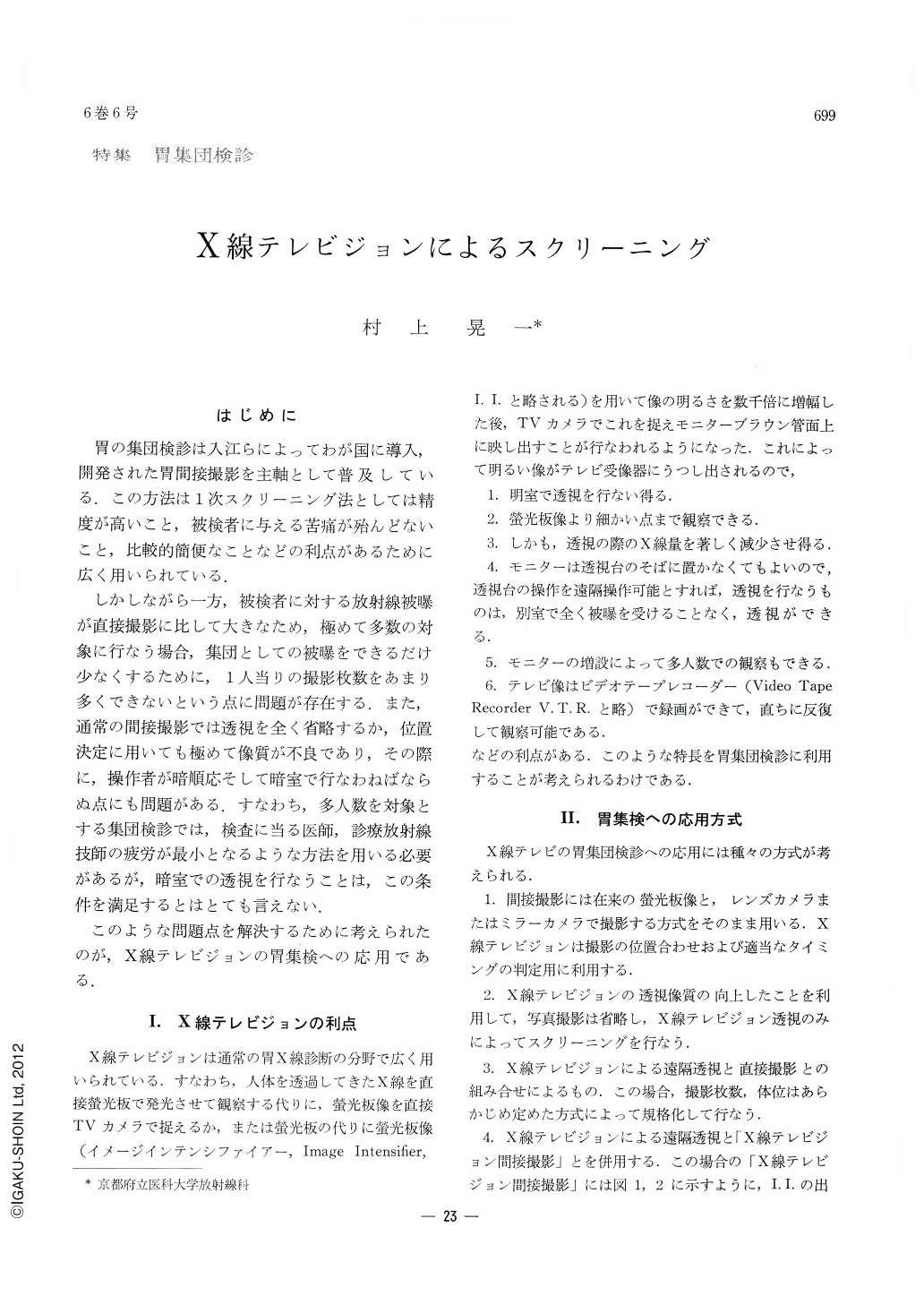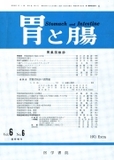Japanese
English
- 有料閲覧
- Abstract 文献概要
- 1ページ目 Look Inside
はじめに
胃の集団検診は入江らによってわが国に導入,開発された胃間接撮影を主軸として普及している.この方法は1次スクリーニング法としては精度が高いこと,被検者に与える苦痛が殆んどないこと,比較的簡便なことなどの利点があるために広く用いられている.
しかしながら一方,被検者に対する放射線被曝が直接撮影に比して大きなため,極めて多数の対象に行なう場合,集団としての被曝をできるだけ少なくするために,1人当りの撮影枚数をあまり多くできないという点に問題が存在する.また,通常の間接撮影では透視を全く省略するか,位置決定に用いても極めて像質が不良であり,その際に,操作者が暗順応そして暗室で行なわねばならぬ点にも問題がある.すなわち,多入数を対象とする集団検診では,検査に当る医師,診療放射線技師の疲労が最小となるような方法を用いる必要があるが,暗室での透視を行なうことは,この条件を満足するとはとても言えない.
このような問題点を解決するために考えられたのが,X線テレビジョンの胃集検への応用である.
The conventional fluorophotographic method, currently employed in gastric mass survey, has as one of its biggest problems reduction of radiation exposure to ever increasing number of examinees. It is true, as compared with its great merit in detecting gastric cancer in its early stage in so many people, the probability of inducing cancer, including leukemia, is very small, but yet it should be more and more replaced by x-ray TV method, because in the latter not only is radiation exposure greatly reduced but also a better image quality is obtained together with its advantage in location of a lesion and in selection of exposure timing.
While in the current method the image on the screen is taken by a lens camera or mirror camera system, in x-ray TV the output phosphor of the image intensifier tube or the image surface of monitor cathode-ray is photographed. Exposure is then reduced to 1/100. During fluoroscopy it also is shortened to about 1/4.5.
Another drawback of the conventional method is the poor rate of detection in gastric polyp, hitherto considered as a lesion in a precancerous state. In x-ray TV, proportioned compression can be obtained in mass survey as well, so that accuracy of detection in gastric polyp can be much improved.
Even when compression was done without in a series of gastric mass survey x-ray TV, gastric cancer was detected in 96 out of 102 cases, including 62 of advanced and 40 of early (limited to the mucosa and/or submucosa) cancer. All of the advanced and early cancer more than 4cm in diameter were thus detected. Incidentally, the detection rates for early cancer of 2-to-4 cm diameter, and that less than 2cm in diameter were 13/17 (77%) and 3/5 (60%), respectively. On the other hand, only 30 gastric polyps were found out of 62, or a detection rate of 48%. This result was so unsatisfactory that a compression device, incorporated in the routine mass survey method, has been used by us since then. X-ray TV with compression applied revealed all of 12 polyps otherwise undetected.
X-ray TV also reduces the time required per ca- pita in mass survey. In the conventional method with 7 exposures, 2 minutes and 4.2 seconds are necessary, while in TV one minute and 59 seconds are sufficient.
For further advance of techniques in the detection of early gastric cancer, the application of x-ray TV to gastric mass survey is mandatory, not only because radiation exposure is very much diminished, thereby increasing the number of exposures per person, but also accuracy of examination is further enhanced by compression, better timing and more accurate location of a lesion.

Copyright © 1971, Igaku-Shoin Ltd. All rights reserved.


